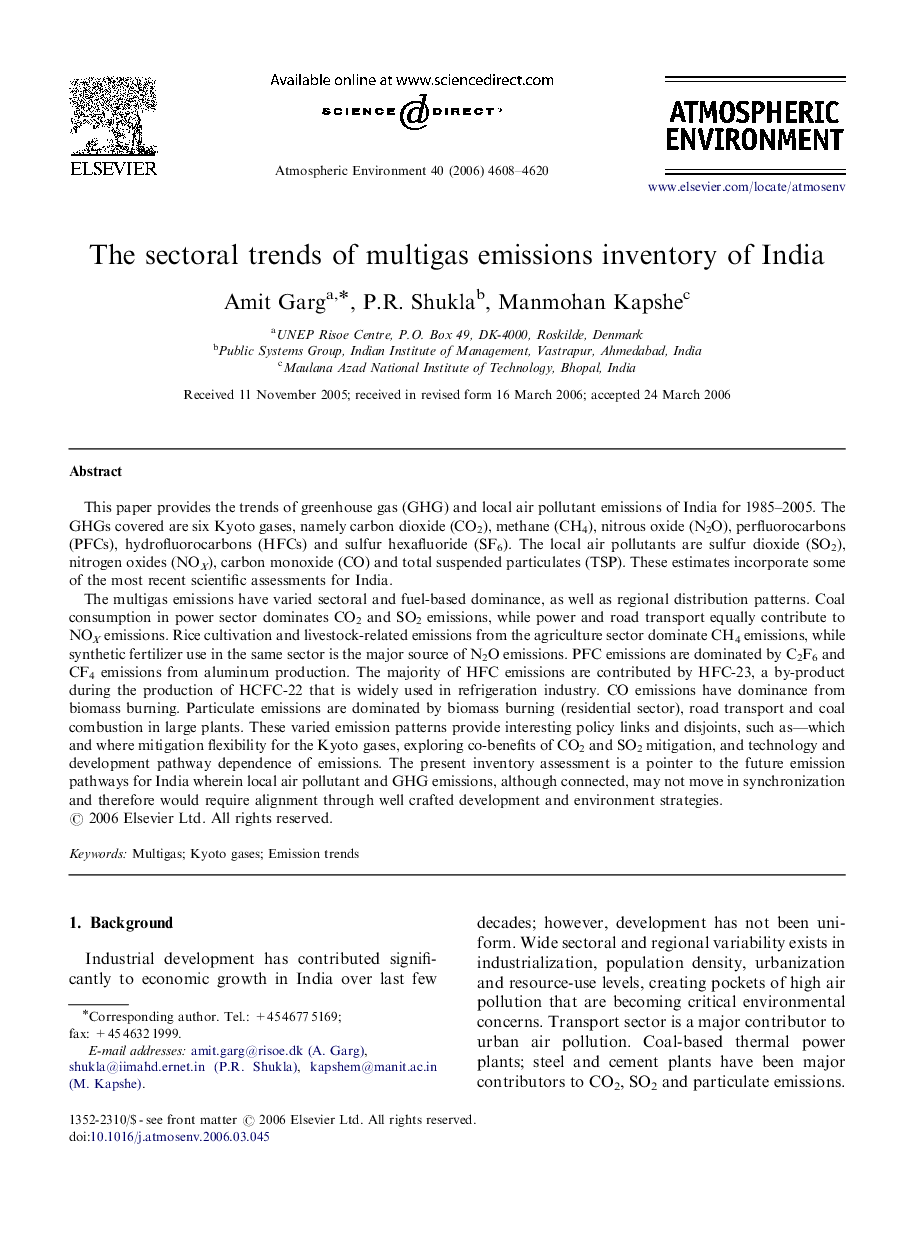| کد مقاله | کد نشریه | سال انتشار | مقاله انگلیسی | نسخه تمام متن |
|---|---|---|---|---|
| 4443519 | 1311196 | 2006 | 13 صفحه PDF | دانلود رایگان |

This paper provides the trends of greenhouse gas (GHG) and local air pollutant emissions of India for 1985–2005. The GHGs covered are six Kyoto gases, namely carbon dioxide (CO2), methane (CH4), nitrous oxide (N2O), perfluorocarbons (PFCs), hydrofluorocarbons (HFCs) and sulfur hexafluoride (SF6). The local air pollutants are sulfur dioxide (SO2), nitrogen oxides (NOX), carbon monoxide (CO) and total suspended particulates (TSP). These estimates incorporate some of the most recent scientific assessments for India.The multigas emissions have varied sectoral and fuel-based dominance, as well as regional distribution patterns. Coal consumption in power sector dominates CO2 and SO2 emissions, while power and road transport equally contribute to NOX emissions. Rice cultivation and livestock-related emissions from the agriculture sector dominate CH4 emissions, while synthetic fertilizer use in the same sector is the major source of N2O emissions. PFC emissions are dominated by C2F6 and CF4 emissions from aluminum production. The majority of HFC emissions are contributed by HFC-23, a by-product during the production of HCFC-22 that is widely used in refrigeration industry. CO emissions have dominance from biomass burning. Particulate emissions are dominated by biomass burning (residential sector), road transport and coal combustion in large plants. These varied emission patterns provide interesting policy links and disjoints, such as—which and where mitigation flexibility for the Kyoto gases, exploring co-benefits of CO2 and SO2 mitigation, and technology and development pathway dependence of emissions. The present inventory assessment is a pointer to the future emission pathways for India wherein local air pollutant and GHG emissions, although connected, may not move in synchronization and therefore would require alignment through well crafted development and environment strategies.
Journal: Atmospheric Environment - Volume 40, Issue 24, August 2006, Pages 4608–4620